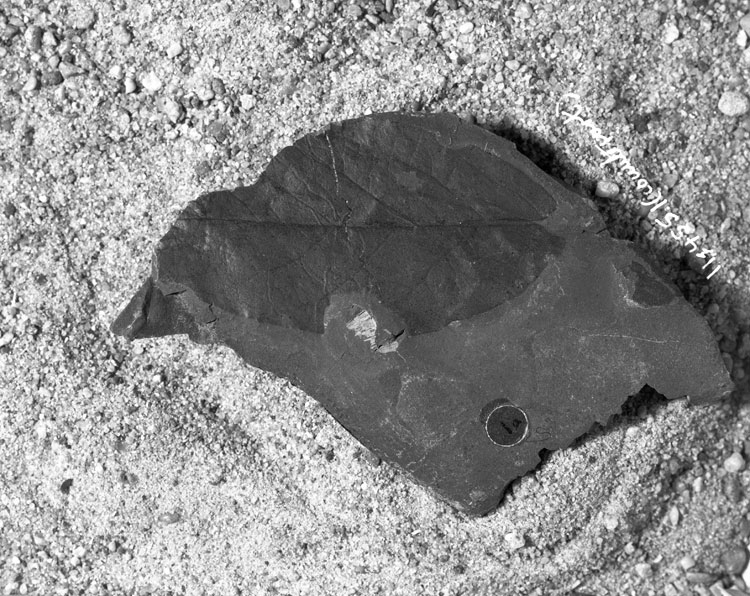Locality
USGS 11611
Lat. 60° 01' 46"N Long. 165° 22' 42"W
Nunivak Island (C-1) Quad.
Description
Leaf: simple; symmetrical; narrow elliptic; apex missing; base obtuse; margin entire; venation pinnate camptodromous; primary midvein moderate, straight; secondary veins moderate, curved sometimes sinuous and irregular in course, forming festooned brochidodromous loops irregular in size and shape, secondary veins arising from the midvein at angles of 30-45°; tertiary veins irregular in course but sometimes coalscing to form a compound intersecondary vein.
Remarks
The venation of this specimen is very poorly organized. The course of the secondary veins is erratic and they are variable in strength, therefore distinguishing them from tertiary veins is sometimes difficult. The tertiaries exhibit little or no organization except for the formation of compound intersecondary veins but there is perhaps a tendency to be transverse.
The leaf has a striking resemblance to the extant species Rhodoleia forresti Chun, a hamamelid. Such similarity does not, however, prove a relationship and may be coincidental. Taktajan (1969) considers Rhodoleia Champian and Hooker to be amongst the most primitive genera of the Hamamelidaceae and perhaps it is not unlikely that it might be represented in Cretaceous fossil forms. Leaves with similar architecture have been recovered from numerous Cretaceous localities and are described under the name 'Juglans' arctica Heer. Unfortunately this name includes such a wide range of forms it is virtually meaningless for biostratigraphic purposes.
'Diospyros' steenstrupi Heer (1883, p. 32; Plate 64, Figs. 1a, 1b; Hollick, 1930, p. 114; Plate 85, Fig. 2) is another Cretaceous form possessing extremely disorganized venation to which this specimen may have an affinity. Hollick's specimen was collected from the Chignik Formation.
In view of the uncertainty over the relationship of this leaf to other forms it is better treated on its architectural features alone. Therefore on the artificial classification scheme adopted in this work it is regarded as a magnoliid-like form.
